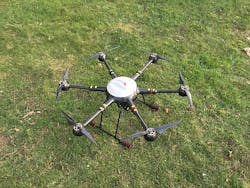Swedish group says UAS solutions will help automate daily operations in airports
In that aim, a newly granted project, Airport Surveillance for Airport Safety (ASAS), will be led by RISE Research Institutes of Sweden.
The project will be conducted together with LFV (Luftfartsverket), Swedish Regional Airports (SRF), Örnsköldsvik Airport (OER) and Swedish UAS manufacturer FlyPulse will develop and demonstrate drone solutions to help automate daily operations in airports. The project will identify use cases that address the needs of daily operations at airports, develop and demonstrate drone solutions that help automate the airport operations, improve the airport safety, optimize the resource utilization, and reduce the environmental impacts.
LFV introduced its Remote Tower Center (RTC) in 2015 with the traffic control for the OER airport was taken over by Sundsvall/Midlanda airport (SDL) through remote control. Again in 2017, connected vehicles were introduced for improving airport safety based on results from the project DRIWS – Digital Runway Incursion Warning Systems, where physical stop-lights were replaced by digital signals within the vehicles for preventing ground vehicles from approaching the runway without clearance from air traffic control (ATC).
For further development of airport automation, LFV in collaboration with OER airports has initialized a program with the vision of the “Autonomous Airport” within which future-oriented solutions will be tested and evaluated for safe, cost-effective and remotely controlled automated airports. One application area involves the integration of drone solutions in daily airport operations.
Airport inspection includes many routine tasks such as frequent border surveillance of airport fences, wild animal detection and runway surface conditions. These tasks are usually time and labor intensive and introduce emissions when fossil fueled vehicles are in operation.
Related: Saab GlobalEye Airborne Early Warning & Control aircraft achieves first flight
"Instead of driving a vehicle for checking the airport fences, electrically powered drones could be used for automatic checking, streaming live video to personnel for supervision. This will save considerable amounts of time and daily vehicle driving and thereby reduce costs and vehicle emissions,” says Jonas Didoff, senior advisor at LFV and project manager for DRIWS. “With advanced detection techniques, the system could also alarm the personnel if fence damages or animals are found on the airport perimeters."
The project will last for 14 months and will have a public demonstration in mid 2019. The project is funded by VINNOVA, Sweden’s innovation agency through its program on future drones.
Ready to make a purchase? Search the Intelligent Aerospace Buyer's Guide for companies, new products, press releases, and videos
